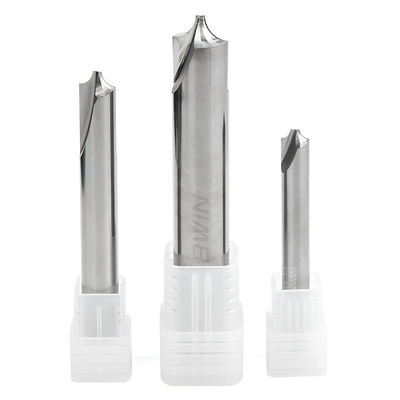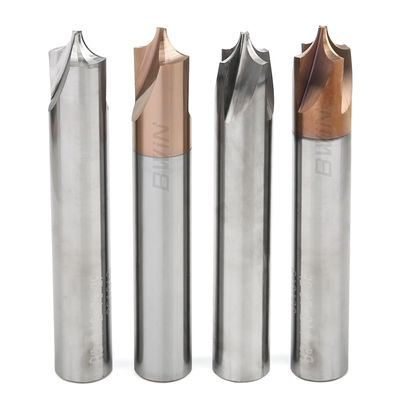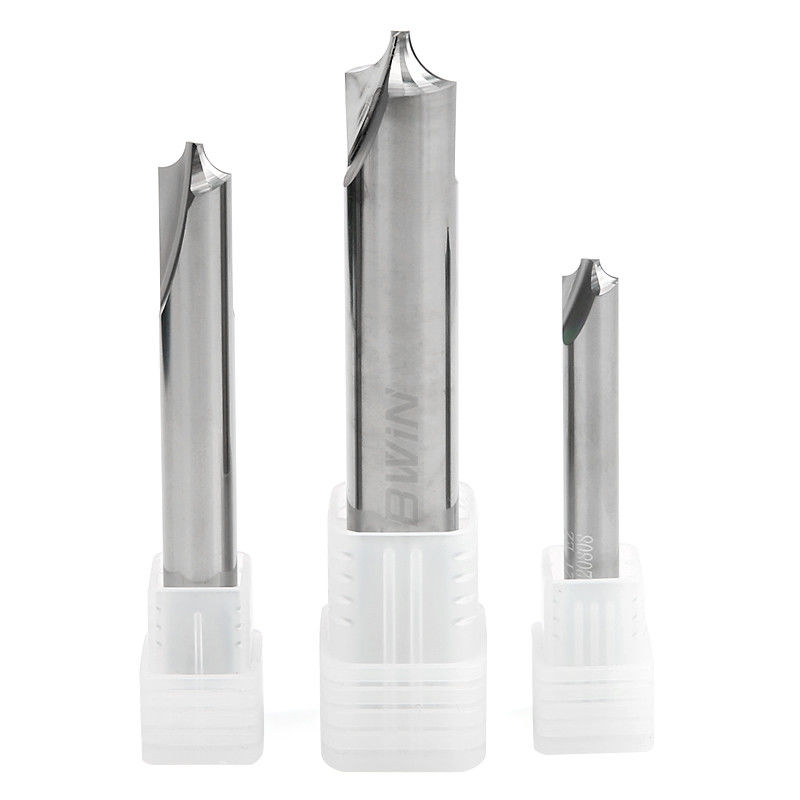Inner R 2 Flute Milling Cutter HRC55 Degree For Solid Carbide Aluminum
Product Details:
| Place of Origin: | China |
| Brand Name: | BWIN |
| Model Number: | R1.0*D4*50L-2F |
Payment & Shipping Terms:
| Minimum Order Quantity: | 1pcs/box |
|---|---|
| Price: | Negotiable |
| Packaging Details: | Plastic box |
| Delivery Time: | 7 work days |
| Payment Terms: | T/T, Western Union |
| Supply Ability: | 1-10000pcs 7days |
|
Detail Information |
|||
| Product Name: | HRC55 2 Flute Inner R Milling Cutter | Model: | R0.5-R6 |
|---|---|---|---|
| Material: | Tungsten HRC55 Internal R Milling Cutter | Workpiece: | Aluminum |
| Usage: | Milling Machine | Coating: | Uncoated |
| HRC: | HRC55 | Feature: | Fine Cutting |
| Application: | Milling | Package: | 1pcs/Box |
| Highlight: | Inner R 2 Flute Milling Cutter,HRC55 2 Flute Milling Cutter,Internal R Carbide Milling Cutter |
||
Product Description
Quick Detail OF inner-R Endmill
- Solid tungsten steel
- Sharp and wear-resistant
- One-time molding
- Accurate R-angle
- Specular highlights
- Straight groove chip removal
Description OF inner-R End Mill
- The HRC55 2F aluminum internal R milling cutter has high surface finish, smooth cutting, improved work efficiency, high temperature resistance, and stronger wear resistance; Adopting a sharp blade angle design, greatly reducing cutting resistance, large spiral angle, straight groove chip removal without burrs, improving the smoothness of the processed workpiece; The chamfered layout of the handle makes clamping easier and the cutting process stable, which is beneficial for preventing tool breakage.
Milling parameters OF inner-R End Mill
| HRC55 Carbide Inner R End Mill |
Tool length | fz&v | |||||
| Short |
1 |
||||||
| Long1 | 0.9 | ||||||
| Overlength | 0.8 | ||||||
| Speciality | 0.6 | ||||||
| Type | Material |
Strength N/mm²
Hardness HRC |
Cooling | ||||
| Air |
Dry cutting |
Lubricating fluid | |||||
| P | PI |
P1.1 |
Non alloy structural steel, free cutting structural steel, carburized steel and quenched and tempered steel | <700 | √ | √ | √ |
| P1.2 | quenched and tempered steel | <1200 | √ | √ | √ | ||
| P2 | P2.1 | Alloyed nitrided steel, carburized steel and quenched and tempered steel | <900 | √ | √ | √ | |
| P2.2 | Tool steel, bearing steel, spring steel and high-speed steel | <1400 | √ | √ | |||
| P3 | P3.1 | Tool steel, bearing steel, spring steel and high-speed steel | <900 | √ | √ | √ | |
| P3.2 | Tool steel, bearing steel, spring steel and high-speed steel | <1500 | √ | √ | |||
| Sloting | ||||||||||||
| Vc (m/min) |
fz(mm/Tooth) | |||||||||||
| Diameter | ||||||||||||
| 2 | 4 | 6 | 8 | 10 | 12 | 16 | 20 | |||||
| 112 | 0.01 | 0.018 | 0.026 | 0.034 | 0.041 | 0.048 | 0.06 | 0.069 | ||||
| 92 | 0.01 | 0.017 | 0.025 | 0.032 | 0.038 | 0.045 | 0.056 | 0.065 | ||||
| 100 | 0.01 | 0.018 | 0.026 | 0.034 | 0.041 | 0.048 | 0.06 | 0.069 | ||||
| 72 | 0.009 | 0.015 | 0.022 | 0.028 | 0.034 | 0.04 | 0.05 | 0.058 | ||||
| 64 | 0.01 | 0.018 | 0.025 | 0.032 | 0.039 | 0.045 | 0.057 | 0.066 | ||||
| 56 | 0.009 | 0.016 | 0.023 | 0.029 | 0.036 | 0.041 | 0.052 | 0.06 | ||||
| Roughing | ||||||||||||
| Vc (m/min) |
fz(mm/Tooth) | |||||||||||
| Diameter | ||||||||||||
| 2 | 4 | 6 | 8 | 10 | 12 | 16 | 20 | |||||
| 228 | 0.018 | 0.031 | 0.045 | 0.057 | 0.070 | 0.081 | 0.101 | 0.118 | ||||
| 208 | 0.017 | 0.029 | 0.042 | 0.054 | 0.065 | 0.071 | 0.095 | 0.11 | ||||
| 184 | 0.018 | 0.031 | 0.045 | 0.057 | 0.070 | 0.081 | 0.101 | 0.118 | ||||
| 144 | 0.015 | 0.026 | 0.037 | 0.048 | 0.058 | 0.068 | 0.085 | 0.098 | ||||
| 132 | 0.017 | 0.03 | 0.042 | 0.054 | 0.066 | 0.077 | 0.096 | 0.112 | ||||
| 112 | 0.015 | 0.027 | 0.039 | 0.05 | 0.060 | 0.07 | 0.088 | 0.102 | ||||
| Finish | |||||||||||
| Vc m/min |
fz(mm/Tooth) | ||||||||||
| Diameter | |||||||||||
| 2 | 4 | 6 | 8 | 10 | 12 | 14 | 16 | 18 | 20 | ||
| 332 | 0.028 | 0.05 | 0.07 | 0.091 | 0.11 | 0.128 | 0.144 | 0.16 | 0.173 | 0.186 | |
| 272 | 0.026 | 0.046 | 0.066 | 0.085 | 0.103 | 0.12 | 0.135 | 0.15 | 0.162 | 0.173 | |
| 304 | 0.028 | 0.05 | 0.07 | 0.091 | 0.11 | 0.128 | 0.144 | 0.16 | 0.173 | 0.186 | |
| 212 | 0.023 | 0.041 | 0.059 | 0.076 | 0.092 | 0.107 | 0.121 | 0.134 | 0.145 | 0.155 | |
| 196 | 0.027 | 0.047 | 0.067 | 0.086 | 0.104 | 0.122 | 0.137 | 0.152 | 0.165 | 0.177 | |
| 168 | 0.024 | 0.043 | 0.061 | 0.079 | 0.095 | 0.111 | 0.125 | 0.139 | 0.150 | 0.161 | |
- If the following carbide internal R milling cutter cannot meet your requirements, we support OEM customized production. The diameter of 0.2mm to 25mm, the total length of 50mm to 200mm, 4F, 5F, 6F, 8F and logo can be customized, including inch size end milling cutter. Please contact us to select or customize non-standard carbide end mill according to your needs.
|
Radius
|
Cutting diameter
|
Tip diameter
|
Shank diameter
|
Overall
length
|
Flutes
|
|
R0.5
|
4
|
3
|
4
|
50
|
2/4
|
|
R0.75
|
4
|
2.5
|
4
|
50
|
2/4
|
|
R1.0
|
4
|
2
|
4
|
50
|
2/4
|
|
R1.25
|
6
|
3.5
|
6
|
50
|
2/4
|
|
R1.5
|
6
|
3
|
6
|
50
|
2/4
|
|
R1.75
|
6
|
2.5
|
6
|
50
|
2/4
|
|
R2.0
|
6
|
2
|
6
|
50
|
2/4
|
|
R2.5
|
8
|
3
|
8
|
60
|
2/4
|
|
R3.0
|
8
|
2
|
8
|
60
|
2/4
|
|
R3.5
|
10
|
3
|
10
|
75
|
2/4
|
|
R4.0
|
10
|
2
|
10
|
75
|
2/4
|
|
R5.0
|
12
|
2
|
12
|
75
|
2/4
|
|
R6.0
|
14
|
2
|
14
|
75
|
2/4
|
Instructions OF internal R Milling Cutter
1. Before using the carbide internal R milling cutter, please measure the tool deflection. If the tool deflection accuracy exceeds 0.01mm, please correct it before cutting.
2. The shorter the carbide e extends out of the collet, the better. If the tool extends out longer, reduce the speed, feed speed or cutting amount.
3. In case of abnormal vibration or sound during cutting, please reduce the speed and cutting amount until the situation is improved.
4. Spray type and air jet type are preferred for steel cooling, which can improve the use effect of carbide inner R milling cutter.
5. Note: Not suitable for low speed machines such as rotary table and electric hand drill.
Applications OF internal R End Mill
| Brand | BWIN |
| Flutes | 2 Flutes |
| Product Name | Internal R milling cutter for aluminum |
| Hardness | HRC55 ° |
| Applicable materials | Aluminum alloy, copper, aluminum parts, etc |
![]()
Q1. The tool breaks when cutting in or pulling out the workpiece
The feed rate and cutting depth can be reduced, and the cutting edge length can be shortened to the minimum of the necessary length.
Q2. Tool breaks during normal machining
Reduce the feed rate and cutting depth.
The tool shall be passivated.
Replace the clamp or spring collet.
The tool with high cutting edge number changes the tool with low cutting edge number to improve chip removal and prevent chip blockage.
Replace dry milling with wet milling (using cutting fluid), and use it with vortex tube gun to reduce tool temperature and avoid tool overheating.
If the wet milling fluid supply direction is changed from the front to the oblique rear or transverse top, the coolant flow should be sufficient.
Q3. The tool breaks when the feed direction changes
(1) Use arc interpolation (NC machine tool), or temporarily stop (temporarily) feeding.
(2) Reduce (decrease) the feed before and after the direction change.
(3) Replace the clamp or spring collet.
Q4. Problem: Part of the blade tip breaks
Chamfer the corners with manual grinding.
Change down milling to up milling.






